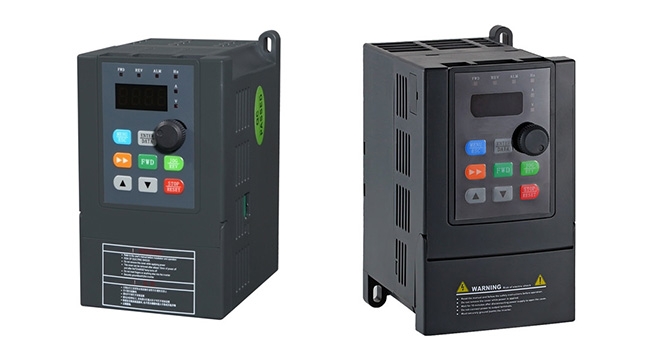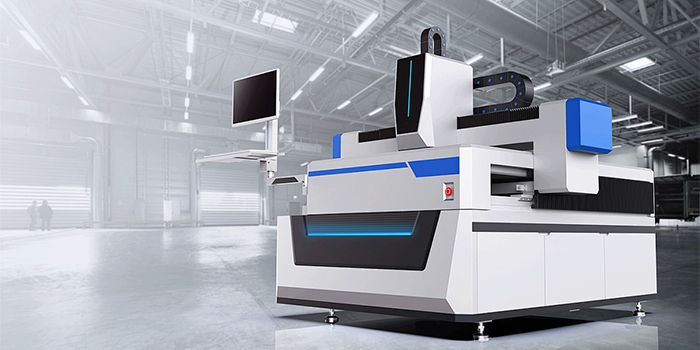Frequency inverters are indispensable pieces of equipment in industrial production. They are widely used for motor speed regulation and control. Their stability and reliability directly affect production efficiency and equipment lifespan. Therefore, regular maintenance and care of frequency inverters are crucial. Today we will explore how to maintain and care for frequency inverters to ensure their efficient and stable operation.
What is a Frequency Inverter?
Firstly, Inverter.com will briefly discuss the definition of a frequency inverter. A frequency inverter, also known as a variable frequency drive (VFD), is a power control device that applies frequency conversion and microelectronic technology to control AC motor power by changing the motor's power supply frequency. The frequency inverter primarily consists of a rectifier (AC to DC conversion), filter, inverter (DC to AC conversion), braking unit, drive unit, detection unit, and microprocessor unit. The inverter adjusts the output power voltage and frequency by switching the internal IGBT (Insulated Gate Bipolar Transistor), providing the necessary power voltage based on the motor's actual needs, thereby achieving energy savings and speed regulation. Additionally, frequency drive inverters offer various protection functions, such as overcurrent, overvoltage, and overload protection. With the increasing level of industrial automation, VFD inverters are extensively used in fan, pump, compressor speed control, and industrial automation production lines.

Daily Maintenance of Frequency Inverters
1. Regular Inspection of Electrical Connections: Electrical connections are fundamental to the proper functioning of a frequency inverter. Regularly inspecting the electrical connections of the inverter and its accessories is a critical measure to prevent electrical failures. The inspection includes but is not limited to power lines, control lines, and motor lines, ensuring that all terminal connections are secure, free from corrosion, and not oxidized.
2. Cleaning and Dust Removal: The operating environment for frequency inverters can be complex, leading to the accumulation of dust and debris. These substances not only affect the cooling efficiency but can also damage electronic components. Therefore, regular cleaning of the inverter is essential. Use a dry cloth or soft brush to gently wipe the surface and interior of the inverter, avoiding wet cloths or chemical solvents. Pay special attention to cleaning the heat sink and fan to ensure unobstructed airflow.
3. Checking the Cooling System: A frequency inverter generates significant heat during operation, and inadequate cooling can lead to excessive temperatures, affecting performance and lifespan. Regularly check the cooling system, including the heat sink and fan components, to ensure that the heat sink is not blocked and that the fan operates normally. For cabinet-mounted inverters, also check the cabinet's cooling effectiveness to ensure clear airways.
4. Inspecting Capacitors and Resistors: Capacitors and resistors are critical internal components of a variable frequency inverter, directly affecting its stability and reliability. Regularly inspect these components for aging, deformation, or damage, and replace them if necessary. Especially for filter capacitors, which typically have a lifespan of about five years, it's advisable to inspect their capacity annually and replace them if it decreases by more than 20%.
5. Checking Software Settings and Parameters: The software settings and parameters of a frequency inverter significantly influence its operational performance. Regularly check the software settings and parameters to ensure their accuracy and reasonableness. For programmable inverters, also ensure that the program runs normally without errors or abnormalities.
Periodic Maintenance of Frequency Inverters
- Deep Cleaning: In addition to daily cleaning, periodic deep cleaning of the inverter is necessary. This involves disassembling the inverter and thoroughly cleaning and removing dust from the rectifier cabinet, inverter cabinet, and control cabinet. Pay special attention to clearing dust and dirt from inside the inverter and its airflow paths to ensure a clean and bright surface.
- Inspecting Busbars and Connectors: Busbars and connectors are essential internal components of a frequency inverter, affecting the stability and reliability of electrical connections. Regularly inspect these components for deformation, corrosion, or oxidation, and replace or repair them if necessary. Also, check that the screws at the busbar connections are tight, and tighten them if loose.
- Anti-Corrosion Treatment: Some internal components of a frequency inverter may experience corrosion over time. Corroded parts should undergo necessary anti-corrosion treatment, such as applying insulating varnish to prevent further corrosion of busbars and connectors. If any insulating boards have suffered a dielectric breakdown, remove the damaged parts and insulate them with the appropriate grade of insulation board.
- Replacing Fans and Filter Capacitors: Fans and filter capacitors are consumable components in frequency inverters, with their performance degrading over time. Therefore, regular inspection and replacement are required. The typical lifespan of a fan is 2-3 years, and that of a filter capacitor is around 5 years. When replacing these components, ensure that the correct model and specifications are selected and follow the proper replacement procedures.
- Electrical Testing and Inspection: Regular electrical testing and inspection are crucial to ensuring the stable performance of a frequency inverter. This includes checking the forward and reverse resistance of components such as diodes and GTOs (Gate Turn-Off Thyristors) in the rectification and inversion sections, the ground and interphase resistance of input and output reactors, and the stability of the output voltage from the switching power supply circuits. Electrical testing and inspection help identify and address potential electrical faults and risks.

Optimizing the Operating Environment for Frequency Inverters
1. Controlling Temperature and Humidity: Frequency inverters have specific requirements for temperature and humidity. Excessive temperature can cause overheating alarms or even damage, while high humidity can lead to internal short circuits. Therefore, controlling the surrounding environment's temperature and humidity is crucial when using frequency inverters, avoiding high-temperature and humid environments.
2. Avoiding Strong Magnetic Fields and Dust: Frequency inverters should be kept away from strong magnetic fields and dusty environments. Strong magnetic fields can interfere with the inverter's normal operation, while dust can affect cooling efficiency and electrical connections. Therefore, when installing the inverter, choose a suitable location and environment to avoid the impact of strong magnetic fields and dust.
3. Proper Installation and Wiring: The installation and wiring of a frequency inverter are also critical factors affecting its performance. Consider the cooling environment and ventilation conditions when installing the inverter. Avoid long, thin, or cross-interfering wiring during installation, and ensure that the inverter is properly grounded to enhance its anti-interference capability and safety.
Inverter.com offers a comprehensive range of general-purpose inverters, including precisely matched single-phase input and output inverters, highly efficient and innovative 1-phase to 3-phase inverters, and stable and reliable three-phase inverters. These products are perfectly suited to meet the diverse load requirements in various industrial and commercial applications. Whether you're looking to enhance motor performance, achieve energy savings and emission reductions, or optimize equipment control, Inverter.com is here to assist you, making power conversion smarter and more efficient.
As a vital component of industrial automation, the maintenance and care of frequency inverters directly impact production efficiency and equipment stability. Regular inspections of electrical connections, cleaning, cooling system checks, capacitor and resistor inspections, and software settings and parameters checks ensure the proper operation and extended lifespan of the inverter. Additionally, optimizing the operating environment and proper installation and wiring can further enhance the inverter's performance and stability. Therefore, in practical applications, we must strengthen the maintenance and care of frequency inverters to ensure their greater role in industrial production.
